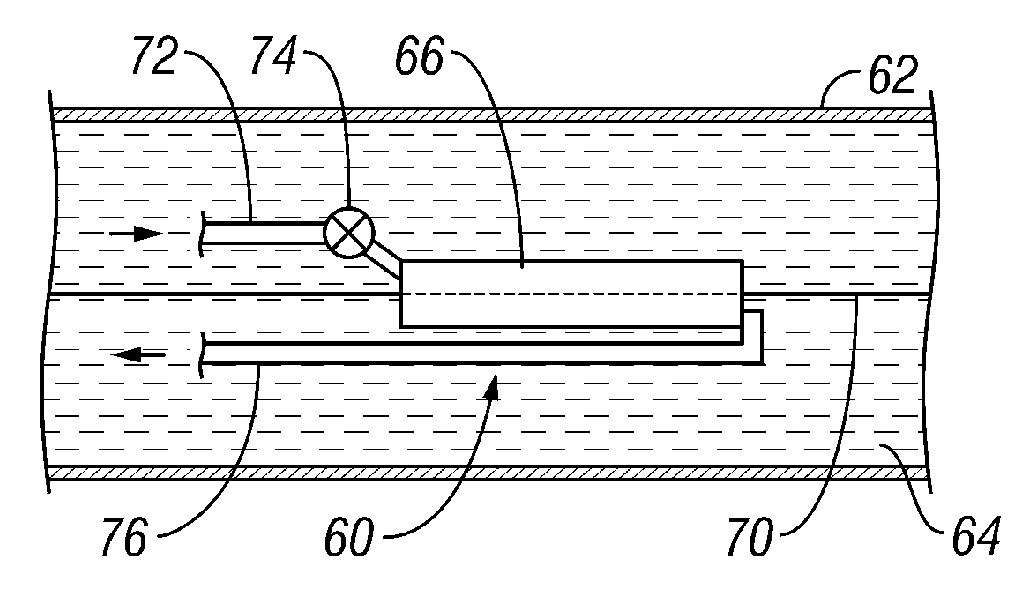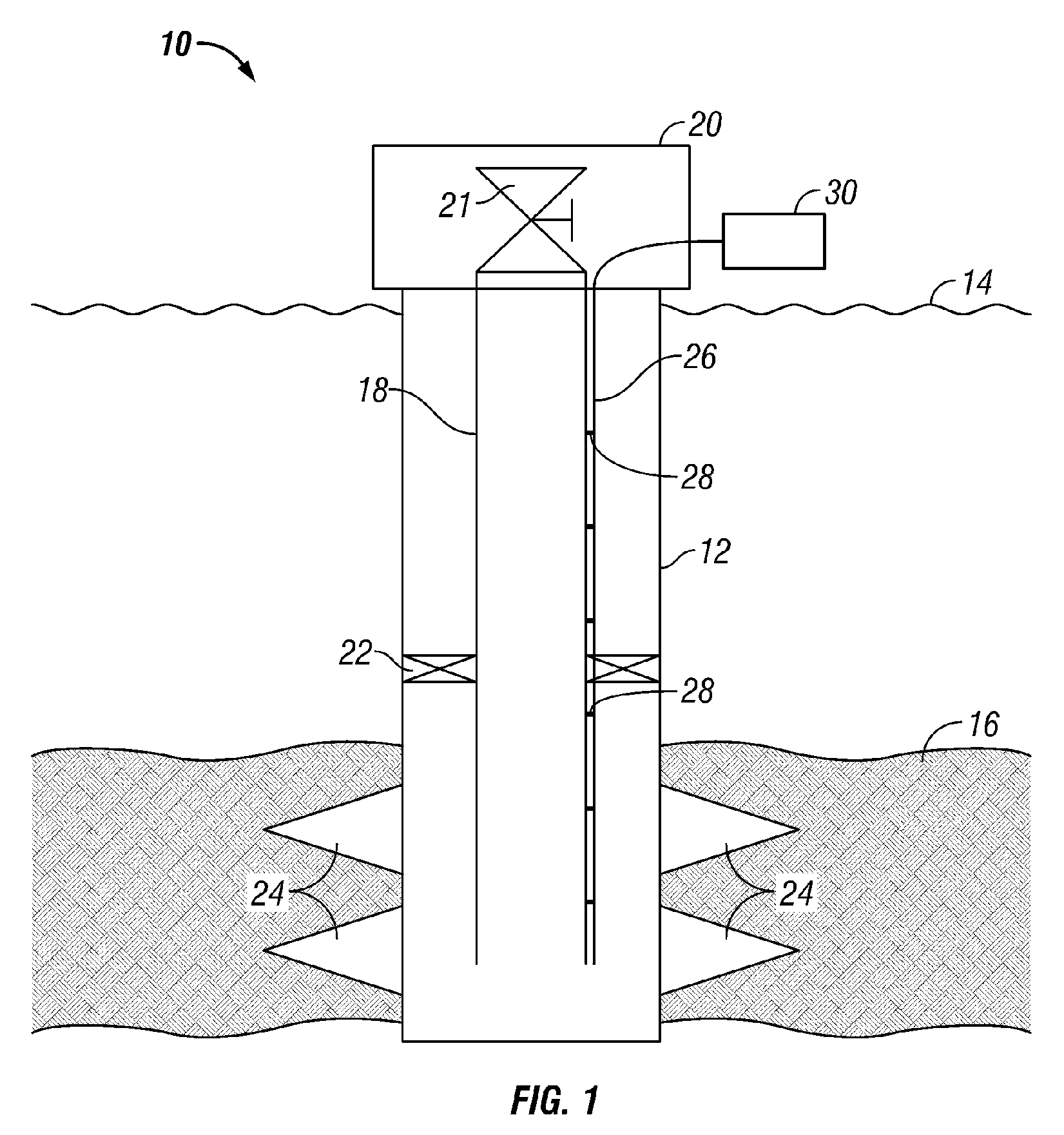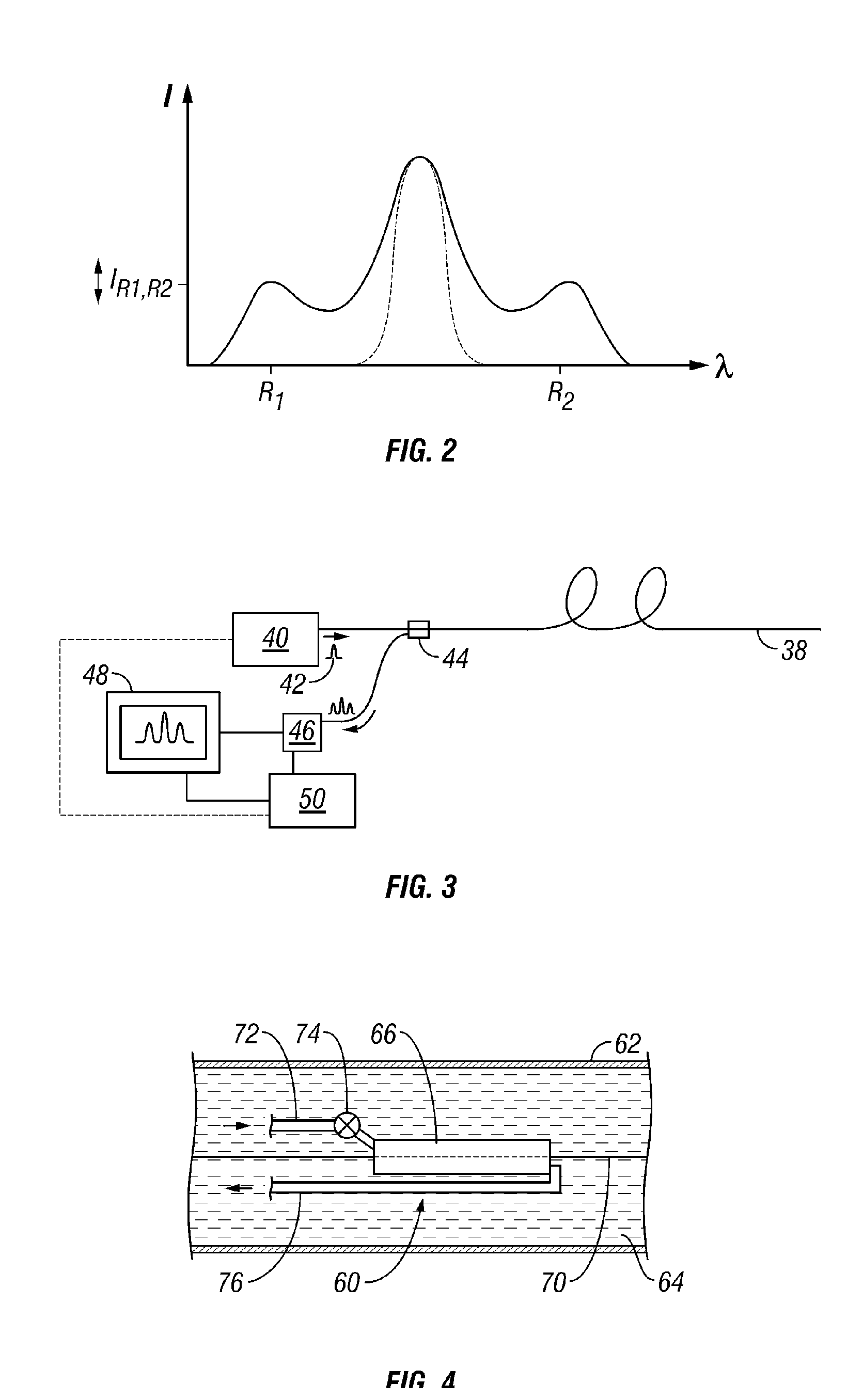Method and Apparatus for Measuring Fluid Properties
a technology of fluid properties and methods, applied in the field of methods and apparatus for measuring fluid properties, can solve problems such as poor resolution of systems
- Summary
- Abstract
- Description
- Claims
- Application Information
AI Technical Summary
Benefits of technology
Problems solved by technology
Method used
Image
Examples
Embodiment Construction
[0035] The present invention uses optical fiber or other temperature sensors to measure temperature. It further makes use of the physical principle underlying the hot wire anemometer described above in the introduction, whereby the temperature change of an object in flowing fluid can be used to calculate the rate of flow, because the heat energy transferred between the object and the fluid is proportional to the flow rate. However, this principle is taken further in that the heat energy transfer also depends on other properties of the fluid, such as the fluid type, so that proportions of various constituents in the fluid can be determined. The fluid need not be flowing. According to embodiments of the invention, a heat exchanger is disposed in thermal contact with a fluid of interest, and either heated above or cooled below the temperature of the fluid. This creates a temperature difference so that the fluid exchanges heat with the heat exchanger and the heat exchanger undergoes a c...
PUM
 Login to View More
Login to View More Abstract
Description
Claims
Application Information
 Login to View More
Login to View More - R&D
- Intellectual Property
- Life Sciences
- Materials
- Tech Scout
- Unparalleled Data Quality
- Higher Quality Content
- 60% Fewer Hallucinations
Browse by: Latest US Patents, China's latest patents, Technical Efficacy Thesaurus, Application Domain, Technology Topic, Popular Technical Reports.
© 2025 PatSnap. All rights reserved.Legal|Privacy policy|Modern Slavery Act Transparency Statement|Sitemap|About US| Contact US: help@patsnap.com



